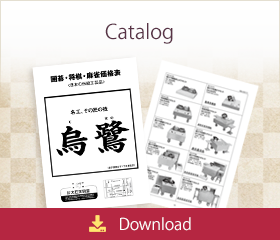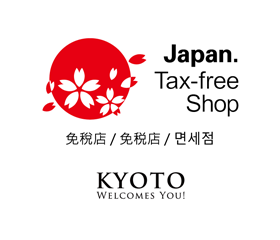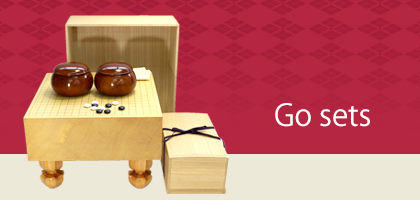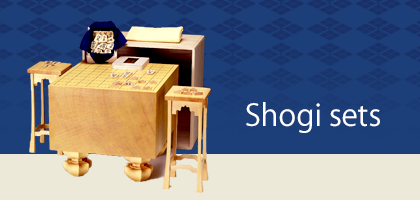Knowledge

About Material
The color, the grain and the feel of the pieces differ depending on the type of wood. Most of our boards are made from the following three types.
Torreya
Our torreya boards have excellent elasticity, a beautiful grain and color and an elegance fragrance like no other wood. The feel and sound when placing pieces or go stones is extremely satisfying, and a golden luster appears through years of use.
Torreya is considered the “king” of Go and Shogi boards, and is a must for all serious fans of the games.
This wood comes from China and Japan.
These days, wood from China is most common.
Spruce
Found in the USA and Canada, this wood has an extremely beautiful grain.
Spruce boards have been used for over 50 years.
The whitish color of the wood accentuates the grain.
Katsura
Mainly found in the Hokkaido and Tohoku regions of Japan, katsura wood has been used for Go and Shogi boards for 150 years.
In recent years, good quality katsura wood has become harder to find, making these boards highly valuable.
The reddish brown wood darkens over time.
Board styles
There are two types of boards: boards with legs and tabletop boards.
Boards with legs are the traditional style. These are designed to be placed directly on the floor in a Japanese-style room, with the players sitting on their heels (seiza).
Tabletop boards can be placed on a table.
We also carry game tables to allow players to sit on a chair when using a board with legs.
“Fuhgetsu” game table
Straight grain, cross grain
The wood for boards is cut so that the rings are at the ends and the grains appear perpendicularly on the surface.
Straight grains or cross grains may appear depending on how the wood is taken from the tree.
As you can see in the pictures, cross-grained wood is taken by diameter and straight-grained wood is taken by radius.
This means that straight-grained wood can only be taken from very old, wide trees.
This is why straight-grained wood is more valuable and expensive.
The grains of straight-grained wood also tend to be spaced more uniformly.
Cross-grained wood, meanwhile, can be taken from smaller, younger trees, making it more affordable than straight-grained wood.
Cross-grained wood surfaces tend to have a peaked or “bamboo shoot” pattern.

Go stones come in a set of 180 white stones and 181 black stones.
About raw materials
There are two main categories of Go stones: those made from natural materials such as clamshell or black stone and those made of glass or plastic.
The most common material, clamshell stone, is classified by place of origin, the thickness of the stone and the fineness of the shell.
Hyuga clamshell stones
These stones are formed by Suwabute clams caught at Okuragahama Beach in Japan.
Suwabute clam shells have a milky white color and a distinctive and beautiful straight-grained pattern. They also do not show finger marks easily.
Sadly, the rapid decline in Suwabute clam populations has seen these beloved luxury Go stones become more and more of a rarity.
Black stone is made from Nachiguro stones, a specialty of Mie Prefecture in Japan.
Mexican clamshell stones
Most clamshell Go stones are made from this material.
The shells come from Mexican clams and are made into Go stones by craftspeople in Hyuga City, Miyazaki Prefecture.
Producing Go stones is a traditional industry in Hyuga.
Hard glass stones
The most common Go stones, with around the same weight as clamshell stones.
Plastic stones
These stones are highly practical as they are very inexpensive and will not break. The disadvantage is that they are light.
Thickness of the stones
Clamshell Go stones are classified by thickness.
Thick stones are more valuable and therefore have a higher price.
Thicker stones are more difficult to hold, but make a satisfying sound when placed on the board.
People’s preferences about thickness vary based on factors like age and gender.
Others choose the thickness of their stones based on how the stones complement the board.
Glass stones range from 7mm to 10mm thick in increments of 1mm.
Plastic stones range from 6mm to 8mm thick, again in increments of 1mm.
Fineness of the shell
Clamshell Go stones are ranked by the fineness of the shell
Yukijirushi
The most valuable stones due to the fine, uniform grain of the shell.
Jitsuyo
Rougher grain is coarser than Yukijirushi.

There are 40 Shogi pieces in a set. Their value is classified based on their material, their finish and the font used for the characters.
About raw materials
Box tree wood
Found in southern Japan, pieces made from this wood have a pleasing texture and make a wonderful sound when placed on the board. The wood takes on an amber hue over the years if it is cared for well.
These are the most valuable Shogi pieces.
Maple and Birch
These is a popular material for Shogi pieces.
Plastic
The lowest priced material.
Gardenia wood
This wood is from Thailand.Almost none of this wood can be found today, making it highly valuable.
Kind
Stamped characters
The characters of the pieces are printed with a special stamp.
Handwritten characters
The craftspeople handwrite the characters on each of the pieces.
The characters look the same at first sight, but then when you look closer, you begin to notice subtle differences that make the characters all the more fascinating.
Carved characters
The craftspeople carefully carve each of the characters and apply lacquer with a brush for a beautiful finish.
Hori-ume characters
“The characters of these pieces are carved and then filled with lacquer.
Lacquer is applied to the carved areas with a brush and allowed to dry before applying more lacquer.
Layers are applied like this until the surface of each piece is flat.
The time required for this process makes these pieces highly valuable.
Mori-age characters
More layers of lacquer are applied to hori-ume characters to create raised characters. These are the pinnacle of Shogi pieces and the most valuable.
Character styles
Different styles are used for carved characters depending on the grade of the carving.
Lower-grade pieces have simplified characters. Higher-grade characters have more authentic characters with a finer form and a more meticulous finish. From lowest to highest, the grades are Nami-hori (standard grade carving), Chu-hori (medium grade carving), Jo-hori (high grade carving) and Tokujo-hori (premium grade carving).
Tokujo-hori characters are based on those of a famous chirographer(Calligrapher), with a wide range of styles.
The most popular types include Kinki, Ryoko and Minase.

The approximate weights of all of our products is provided for your reference.
These are the weights of the products before they are packaged for shipping.
The total weight differs significantly depending on the individual products, but as a general rule, add 30% when calculating the total weight.
An accurate shipping charge will be specified when you place your order.
Please note that the list below only includes prices for EMS (international express delivery).
Please inquire if you wish to use other services such as sea mail or SAL.






















